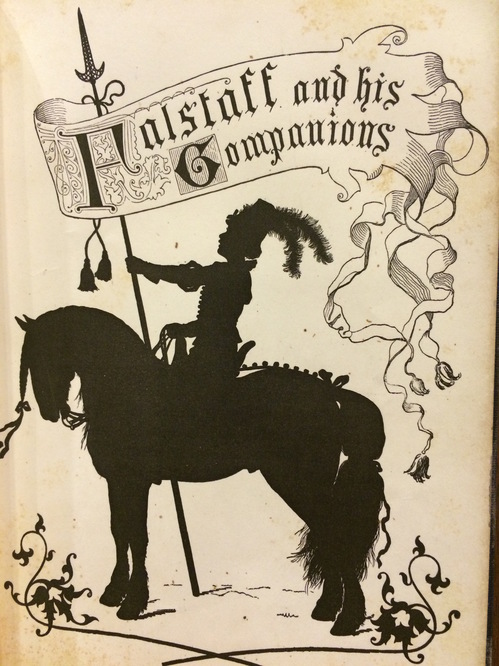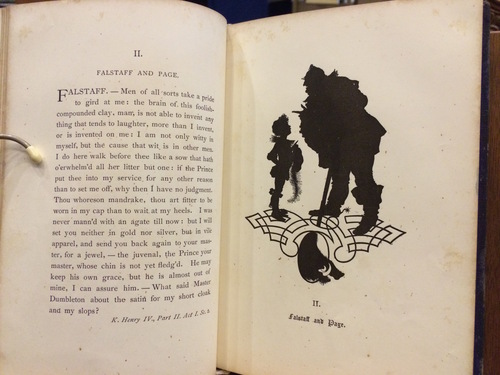Sir John Falstaff, the boisterous, bumbling knight, is one of Shakespeare’s most beloved characters. It is even rumored that Queen Elizabeth loved the character so much that she commissioned the Bard himself to write another play with Falstaff as the lead. Now, his personality has become larger than life, in a way, taking on a life of its own beyond the context of the plays in which he appears.
Today, I’ll be talking about a book about Falstaff and his squad (conveniently titled Falstaff and His Companions). Located in our special collections, this book features illustrations of Falstaff and co. with excerpts from the plays in which they appear to provide context. what makes this book especially interesting is that all of the characters are in silhouette.

There does not seem to be any particular reason for the illustrator to make the characters into silhouettes, other than a possible test of his skill. If he can make the characters recognizable as just a black outline, then he has managed to capture their essence without fretting over unnecessary detail.
Personally, I think using silhouettes gives the reader more control over how they view the characters and allows for variability of actor representation. If the illustrated characters are a blank slate, then anyone can fill the void without disrupting the image of the character.
Some of my favorite Falstaff images feature him interacting with other characters, like a little boy and a married woman.


In addition to showing Sir John in a different light, this book also takes the time to depict his companions, giving the reader a greater sense of depth while adding to visual representations of Shakespeare’s literary universe. Below, we have a few minor characters. The decorative designs underneath their silhouettes nicely augment their frames.


I had my doubts when I picked up the book, but Falstaff can still be captivating even without his devilish grin. It seems a testament to the power of Shakespeare’s characters that they can live even in shadow.